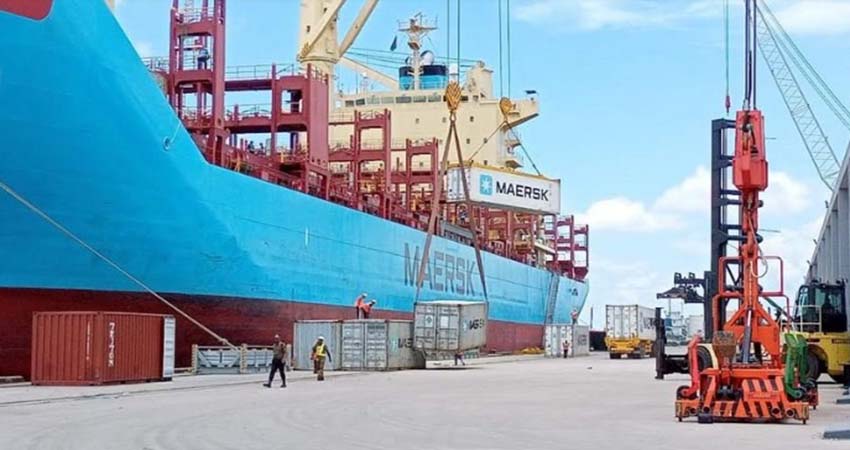The flood situation in Sylhet and Sunamganj has reached alarming due to torrential rains and steep slopes. Due to heavy rains in Meghalaya-Assam of India, the third phase of flooding of the current season has occurred in the Sylhet region. Residents of the region are devastated by one flood after another. Millions of people in the two districts are under water. Due to the steep slopes and continuous downpour, the water level in the rivers of the Brahmaputra, Teesta, Kushiyara, Surma and other basins has jumped and flood situation has also occurred in other districts of North Bengal. Many important installations have also been flooded. Twelve upazilas of Sylhet and Sunamganj have lost power due to power outage. Flights have been suspended at Sylhet Osmani International Airport due to water intrusion. Road communication is also cut off in many areas. Flooded people are rushing to higher ground, schools or shelters in search of safe haven. There is no work in the hands of many, there is no food in the house, there is also a crisis of pure water - in a word, flood hit people are spending their days in dire straits.
According to media reports, heavy rains in Cherrapunji are the main reason behind the sudden floods. However, global warming has changed the type of weather-climate or rainfall. Now when it rains, it rains much deeper. When it rains in Cherrapunji, it reaches Tahirpur in Sunamganj within six to eight hours but the water is not able to come down quickly after coming there. As a result, it is spreading around and creating floods, especially as a result of rock extraction upstream of India, the soil loosens and flows into the river. As a result, the bottom of the river is filled. There is a navigability crisis being created. Trees are also being cut down there. In addition, the rivers are not properly dredged, the bottom of the river is filled with sewage, and houses or wetlands are flooded due to urbanization. Pockets have been blocked at different places in Haor. As a result, water flow is being obstructed.
Experts are looking at a few more reasons behind the sudden onset of floods in the northeastern districts of Bangladesh, including Sylhet, Sunamganj and Kurigram. These districts have been hit by the third phase of floods this year. Residents of these areas say, they have not experienced such severe floods in decades. River researchers say torrential rains in Assam and Meghalaya in India have been a major factor in the recent floods, but some other man-made factors cannot be avoided. Some of the man-made reasons behind this sudden flood are responsible for it. The land in Sylhet or Sunamganj area was as it was before, there was navigability in the river, there were not so many roads or establishments. As a result, it takes a long time for the flood waters to recede now. But now that is not happening. Random unplanned roads have been created in different parts of the haor. As a result, normal water flow is being obstructed. Due to unplanned construction of houses and lack of sewerage in urban areas, water is no longer able to flow downwards. In urban areas, planned drainage systems have not been developed. As a result, the intensity of the flood is going to be felt more now. Due to these reasons floods are happening in advance and its intensity is being observed much more.
One of the major causes of floods is obstruction of water flow due to unplanned construction of roads. In order to facilitate road communication between Itna, Mithamin and Ashtagram upazilas of Haor area of Kishoreganj, a 29.73 km long road was constructed in 2016-2020 at a cost of Tk 874.08 crore, but the road has become a source of misery in that area. Thousands of hectares of crops have been inundated by the recent floods. This road has been under discussion since the untimely floods this time. Residents of the area are complaining that every year during the monsoon season, there is a hill slope. Even if the slope came earlier, the water would go down quickly. Now the water is stuck for a few days. The rice rots in the water. Boro paddy, the only crop in Haor area, was submerged in untimely floods this year as well. The amount of damage has exceeded thousands of crores of taka. Local people, experts and even the cabinet have discussed about this road in Kishoreganj which has become a cause of fear for Haor. The cabinet has asked the government to look into the impact of the floods in Haor. At the same time, the government has made a policy decision not to build any more roads in the haor area. One of the reasons for this is that due to the grace of His Excellency the President, proper environmental survey was not carried out before the decision was taken to construct the road expeditiously. Environmental scientists and water resources experts say that proper environmental survey was not carried out before the construction of this road. Haor is characterized by free flow of water. According to them, if the road has to be constructed, then at least 30 percent of the 30 km road should be constructed in the form of high bridges or flyovers to allow water flow. Also another feature of this road is that it is a stand alone road, this road is not making any connection in a wide sense. The road has been under construction for only two years. They are of the opinion that the environmental impact of this road will be more clearly felt in the event of further floods.
Natural reservoirs including rivers, canals, beels, ponds, haors and baors play a vital role in maintaining the balance of the environment and protection of biodiversity. In addition, wetlands are important for keeping the environment cool, preventing floods during the monsoon season, reducing waterlogging in the city, meeting water demand and treating waste. But the unplanned roads and houses in these haors and wetlands are now seen as a blow to the dying. Homes and localities are suddenly submerged in the flash floods.
According to the Natural Resources Conservation Act-2000, it is completely illegal to fill any pond, reservoir, river or canal. Again, according to the Bangladesh Environmental Protection Act-2010, filling of ponds or reservoirs by any person, organization, government or semi-government, or even an autonomous organization or privately owned by them without the national essential interest is strictly prohibited. But it is a matter of regret that many influential individuals and organizations are destroying the balance of the environment by destroying the natural wetlands by violating the law. This has had a long-term negative impact on people and biodiversity dependent on haors and wetlands.
But sadly, with the passage of time, wetlands are now being lost in towns and villages. People are filling the wetlands as they wish. But wetlands are very important for maintaining the balance of the environment, the survival of plants and animals. In this country, there is no shortage of rivers, canals, beels, ponds, ditches, haors, only lack of conservation! One wetland after another is being filled at village, union, upazila, district and city level.
The loss of one wetland after another from Bangladesh, known as the 'Land of Rivers', means knowingly causing damage to the country and creating man-made disasters. The loss of wetlands has had a negative impact on the livelihoods of marginalized people. Wetlands are our resource, the source of biodiversity. In this changing reality of climate change, it is now crucial to protect reservoirs in a planned manner. In Sylhet, Sunamganj, Habiganj, Kishoreganj and Netrokona districts of Bangladesh, many water bodies like Haor Baor and Beel are observed. It is essential for us to protect these in a planned way. Otherwise, it will be more difficult for us in the future to prevent such unforeseen catastrophes like floods.
Writer: Banker and Columnist



















